What to do with backyard (wooded 1/2 acre)
Hi,
Hope you're doing well. Always enjoy the feedback I get from the forums - challenges me to think differently. I've included a photo below. Any suggestions what you'd do with my backyard? It's about a half acre in planting zone 6B and we'd like to turn it into usable space.
A few notes about the area:
- Photo was taken from my deck, which is raised as I have a daylight basement. You're looking almost directly North (hence, all the trees lean towards our home).
- My property goes from the trees on the right, back to where you can see some green grass, and on the left until the green box you can see.
- According to the survey we have it's 300' deep on the right, 183' wide at the back, and 250' feet deep on the left. It's 130' wide just behind the shed.
- I don't know the types of trees we have, but they're weak (many fall/break in winter, leaves fall before labor day) have shallow root systems, and lean toward the home (front of home faces South).
- I doubt we'll spend the money to move the shed.
- Half way back there is a dry creek bed that fills with water during heavy rains. At the end of the property in the back, there is a small creek, typically filled with water.
- Behind the small creek at the end of the property, there is county owned open space with a basketball court.
Our initial thoughts are to clear the land (consistent with our neighbors), leaving the bigger/stronger trees (maybe 3-5 at the very back). Then grade the land and place drainage for the dry creek bed underground to the small creek. Then plant grass and maybe a few larger shade trees ... something that doesn't have a shallow root system so my grass stays nice.
Thoughts?
{{gwi:52844}}.
Comments (17)
junco East Georgia zone 8a
9 years agoI'm not familiar with your zone, but you need to know what kind of soil, and what kind of trees you have. There's no point in replanting trees until you know why the ones that are there are "weak". Contact your country extension service for a soil test and assistance with your trees.
What kind of "use" did you have in mind? If it were my property, I would create a path back to the creek with understory native trees and shrubs added. I see no need to bury the dry creek--it is possible to plant around such an area to enhance the view.
Good luck!Pro320
9 years agoi think the trees are week because they are too close to each other. they block the sun to each other. the outer trees grow limbs out to get more sun and the trees in the middle try to go high to get sun.
Also the roots of the trees don't have space to grow.Related Professionals
Vernon Hills Landscape Architects & Landscape Designers · Arlington Landscape Contractors · Bethlehem Landscape Contractors · Waterbury Landscape Contractors · Barrington Landscape Contractors · Belmont Landscape Contractors · Hayward Landscape Contractors · Quartz Hill Landscape Contractors · Knoxville Decks, Patios & Outdoor Enclosures · Lancaster Decks, Patios & Outdoor Enclosures · Montgomery County Decks, Patios & Outdoor Enclosures · Pittsburgh Decks, Patios & Outdoor Enclosures · Pueblo West Decks, Patios & Outdoor Enclosures · Sun Lakes Decks, Patios & Outdoor Enclosures · Valinda Swimming Pool BuildersYardvaark
9 years agoYou'll stand a chance of getting more useful help if you fine tune your request and present more information. What would "more usable space" be used for? What are your other objectives? Since landscaping is all about relationships of one thing (or space) to another, it would be helpful if you sketch out and submit an accurate plan view. If the request has anything to do with how the back yard relates to the structure, then, of course, you'd need to show the yard in relationship to the structure.
It probably has little to do with the species of tree that they lean outward toward the yard. All trees seek light and lean whichever way they think offers an opportunity to get some. In a wooded area, it hardly matters that some roots may be shallow. They would be covered with mulch or groundcover. It's usually not a problem with the lawn if one designs the bed so that the trees are some distance from the edge of the bed. Here, some of them are right at the edge of the bed so the bed must be redesigned or some of the front trees removed. The wooded area looks reasonably good on the tree spacing. You might find a spindly tree here or there to take out, but it looks like it's been cleaned up to some degree already. Limbing up the canopy so that you can see into the woods will extend the view and make it seem more visually inviting (even though you probably won't physically enter the space except for maintenance.) A groundcover would look better than mulch as a "floor." I did not grasp you intentions about the underground drainage. It would be something to explain better in the plan view and with more pictures.
edlincoln
9 years agoInsufficient Data. Without knowing what the trees are, you don't know if they are an endangered species or a rare ornamental people spend thousands for.
Many a new homeowner has destroyed landscaping treasures that took decades and tens of thousands to create because they hacked things down in a season when things weren't in bloom, or wanted to match the neighbors.
Or cut down carefully placed shade trees that made a deck bearable in the Summer, or a wind screen that protected the house from hurricanes, or found the neighbors could see into their bathroom.) My Mom says never chop anything down until you've lived on a property for a full year and seen what it looks like in all four seasons.1.) Do a soil test for acidity, etc. Look to see if the soil is sand or clay.
2.) Get advice from your soil conservation office. Look to see what is planted in local parks. Go to Arboretums and see what trees you like.
3.) When Spring comes, get friends, neighbors and relatives who know plants to walk through the area and try to identify the trees. Post photos of the leaves, flowers and berries to the trees and 'Name that Plant" forum. Do the same in Fall when the trees have fruits. Mark the trees you identify. If the problem is that this type of tree doesn't do well in your area, you want to know so you don't plant more. (Skilled Landscapers have repeatedly suggested my parents plant Austrian Pine...the reason they are planting new trees is all the Austrian Pine that were in this location died.)
4.) Look up the types of trees you have or are considering planting. Look them up to see if they are invasive species in your state.
5.) Chop down invasive species. If a tree is weak, remember what it is so you can avoid planting it again.
6.) Decide what you want to use the land for. Really think about this. Is your current yard big enough for a ball game? If so, do you need more grass? Do you want a shady area for the summer? Do you want flowering ornamentals that you can see from your house? A privacy screen? A wind break? The location North of your house suggests this may be a windbreak..expect more wind, higher heating bills and higher home maintenance costs if they are removed.
Remember, if you are lucky you control one acre of the Earth's surface. In a sense you own it, in a sense you hold it in trust for future generations. It seems a shame to unthinkingly turn it into a carbon copy of what the neighbors have.
beesneeds
9 years agoNot enough data for me too...
You say you are thinking of planting in some shade trees- but the trees that are already there are providing shade- why cut down trees that provide shade to plant in trees to provide shade?
And you say usable space- what do you want to use the space for? A garden might need more sun, a pool is a PITA under trees. Naturalizing the area with blooms might not need tree removal at all. For just relaxing in a hammock wouldn't need tree removal either. Using it for an open field for sports or play may need total removal. It all depends on what usable space means for you.
Personally, I think the area looks lovely the way it is- I would maybe install some "natural" walkways and plant in the rest with shade lovers, creating my own little nature preserve/getaway kind of area. Maybe set up some seating and a little bonfire area amongst it all to relax by the fire throughout the year.
duluthinbloomz4
9 years agoSame here; looks good now. I might add a few carefully placed azaleas, rhododendrons, kalmia, and a sprinkling of spring bulbs. Then, I too, would just look at it.
mikebotann
9 years agoIs there vehicle access?
It looks too far and downhill from the house to do anything ambitious.
Why is there nothing growing between the trees? Horses, cows, or just a lot of hard work?
You want more lawn?!!
Mikextremeski2001
Original Author8 years agolast modified: 8 years agoAll,
Thanks for the input. I've finally got around to responding and also updated the photo below for your reference. Two left most streams in the foreground only have water during heavy (>.5") rainfall. They can stay moist/swampy for weeks depending on the season. The stream in the background can become dry, but is generally a small creek. I have no intent to change this as it's the back border of my property. The right area labeled swamp tends to have water sitting in it because there's no place for it to go given the spacing of the trees and the exposed roots.
To provide some additional information ... we have a mid-sized dog and two young children and our family is growing. Since we've moved in, we've had issues with wood ticks, deer ticks, and poison ivy. This is primarily because we have not cleaned up the brush (you can see I've done a lot already, however) and also the 18 or so deer we get in our yard frequently. We may consider fencing the yard, but given the size our yard the cost could be prohibitive. I suspect cutting 10-15 trees/samplings (e.g., diameter <12"), grinding their stumps, rototiling the entire back area, adding rocks to the creek beds, and planting grass will cost a few $k since I will not do it myself. My priority is mitigating the risk of my children coming into contact with the aforementioned issues. We want to do this in a way so it allows for easy / efficient upkeep for the next 10-20 years we'll be here. Here's an example of what I like, but I would not go this thin with the trees and I would probably buy a handful of bushes. The water runoff creek beds might look something like this, simple and low maintenance.
On to your questions ...
"you need to know what kind of soil, and what kind of trees you have. There's no point in replanting trees until you know why the ones that are there are "weak"."
Soil test is outstanding, but the non-wooded area has great soil and our grass is growing very well. I will get the names of the trees, but I've decided I will not be planting new trees. Rather I'll simply thin the ones I already have.
"What kind of "use" did you have in mind? If it were my property, I would create a path back to the creek with understory native trees and shrubs added. I see no need to bury the dry creek--it is possible to plant around such an area to enhance the view."
Ideally, I'd like the backyard to be trees and grass with perhaps a few easy to maintain plants (e.g., azaleas, rhododendrons). I agree burying the creek bed would be expensive and perhaps ugly. I've considered adding rocks to the creek beds instead. Long-term plan is a fire pit, horse shoe pits, hammock, and otherwise grassy/shady area for the kids to safely play. Between the water runoff and the creek, there's already a large and cleared grassy area, but it's field grass so it's littered with bugs, animals, etc. I'd like to establish turf back there, too.
"I did not grasp you intentions about the underground drainage. It would be something to explain better in the plan view and with more pictures."
To get better use of the area, I thought of adding pipes to drain the water runoff to flow under grass that I would add on top of the pipes. I think this would be a lot of work and over the years would probably need additional upkeep. I think I like the idea of adding rocks to the stream beds to create a more natural look and to also maintain the shape of the beds.
"Is there vehicle access?
It looks too far and downhill from the house to do anything ambitious.
Why is there nothing growing between the trees? Horses, cows, or just a lot of hard work?
You want more lawn?!!"I'd have to ask the Township, but there is open space behind the last row of trees. Nothing there but a basketball court and open space. I do want more lawn :-) I view a grass lawn as a clean / safe environment for kids. It sucks to maintain, but it looks great.

agardenstateof_mind
8 years agoSorry to be such a wet blanket, but the linked photo example is, IMHO, ridiculous, highly unnatural and not sustainable. Rototilling in the wooded area will damage the trees' roots, which extend out well beyond the tree's drip line. There are several techniques to reduce tick migration from the wooded area; one is to create and maintain an buffer of mulch or gravel at least 3' wide. Isolate the play area from the wooded area. Perhaps this information in integrated tick management from the Connecticut Agricultural Experiment Station will be helpful: http://www.ct.gov/caes/lib/caes/documents/publications/fact_sheets/integratedtickmanagement.pdf
xtremeski2001
Original Author8 years agolast modified: 8 years ago"How will you water that much lawn? Irrigation system?"
Historically, I have not watered my lawn. This year I started and of course the grass looks much better. However, many of my neighbors get by without watering because we do get a decent amount of rain during the year/summer (outside Philly).
Thanks for the information on ticks and your feedback on rototilling. I just don't know what to do back there. A neighbor down the street did what I showed in the photo. I'm not sure if they rototilled. Maybe they brought in soil and planted grass on top? Maybe after thinning the trees grass started to grow without rototilling.
I really like the idea of the 3' barrier of bark chips/rocks. Maybe it's a matter of divide and conquer. Identify areas where grass is not feasible, plant ground cover and the 3' bark barrier around them and then grass everywhere else.
agardenstateof_mind
8 years agoMost of the trees' feeder roots are near the surface, where they can absorb the moisture, oxygen, and nutrients they require, burying them under additional soil is asking for trouble down the road.
xtremeski2001
Original Author8 years agolast modified: 8 years agoHi All,
It's been a while, but after another season we're still interested in changing this space. agardenstateof_mind added a link that's more or less what we'd like to do. We don't want to cut everything down, but thin it out so the existing / stronger trees thrive. Unfortunately, I won't be able to thin things out myself as I'm not skilled enough with a chainsaw to preserve the other trees.
I like what others posted and here are my thoughts:
1) Soil test.
2) Assess tree types.
3) Chop down weaker or invasive trees.
4) Identify fast growing evergreen plants/bushes to help provide greater privacy from basketball courts behind us. Deer are an issue for us so it would have to be something deer won't destroy. Maybe something like Nellie Stevens Holly that would grow quickly and act as a fence?
5) Land-use will be primarily for kicking the ball around, horseshoes, fire-pit, etc. Right now the ground is filled with pot holes, random large rocks or bricks, bee hives in the ground, poison ivy, yard debris, etc. The previous owner dumped all kinds of stuff back there and it was not maintained. Not safe enough for our young boys to play back there.
6) Clear debris and poison ivy and plant grass. My primary reason of planting grass is to provide a surface for the boys to play on and also prevent some of the other weeds, poison ivy, etc. from having space to grow. Otherwise the woods are just a muddy mess with random tall grass, ticks, poison ivy, etc.
Here is a neighbor of ours that's selling their home and what their backyard looks like. While I don't want to cut down that many trees, it provide a more realistic idea of what we'd like.

xtremeski2001
Original Author8 years agoThere is a method to my madness. I didn't get through it this summer, but hoping to next spring so wanted to get my ducks in a row. I appreciate your time for posting a detailed response and sending me in the right direction!
NHBabs z4b-5a NH
8 years agoRealistically, I would start by cleaning up what you have. This is actually a good time of year to move rocks and brick and anything else the PO dumped back there. I'd move the things like rocks and bricks to an area for stockpiling for now (perhaps behind the shed) and get rid of any trash or woody debris. You may well find uses for the rocks and brick such as creating steps or walls or non-flammable surfaces around a fire pit, so you don't want to get rid of them for now.
If you don't have a heavy duty lawn tractor with a dump cart, get one to help you move things around the property and mowing.
Learn to ID poison ivy regardless of time of year, with leaves and without. Start removing it by pulling it wearing protective clothing OR plan on spraying glysophate (generic Roundup without all the other herbicides) after it leafs out in spring and repeating every 4 weeks or so with any leaves that reappear. You can still get PI when there aren't leaves, so treat winter PI with the same caution needed for the growing season. Don't burn it - you can inhale the oil from smoke and end up hospitalized - but instead put in plastic bags for disposal. If you are particularly sensitive, you can get it from your pets' fur or handling clothing with urushiol (the rash-causing oil in PI), so keep your pets out of it and wash contaminated clothing multiple times in a separate load from other clothing.
If you have deer, mice, voles, squirrels, etc. you will have ticks. You can reduce the number by getting rid of the brushy stuff under the trees, but you won't get rid of them, even with a gravel barrier, because the mammals cross the barrier, bringing ticks. Get in the habit of checking yourself, your dogs, and your kids for ticks every time you come inside (just a quick check) and every night a very careful check at bath or bed time including hair, armpits, ears, and groin. Talk to your vet about tick repellents for your dogs and spray your kids' clothing (not them) with a repellent containing DEET. I can pick up a tick between the house and the veggie garden which is all lawn, and during the spring can find 5-10 ticks a day, but haven't ever (15+ years in our current location) had one embed because I am extremely conscientious about tick checks if I have been outside at all. It takes more than 12 hours for ticks to embed, so if you are checking every night, it won't be an issue.
Next spring mark wet areas, perhaps with stakes so you know exactly where you have standing water, where it stays damp for more than a few days, and where you have running water. IME trying to change drainage patterns without heavy equipment is usually unsuccessful (and potentially illegal in a natural wetland) but you may be able to slightly modify them so you don't have standing water and mosquitoes breeding. You can plan to plant long-damp areas with plants that are tolerant of moisture. This winter collect information and photos of rain gardens (particularly for shade), visit web and local resources that have information on wetland plants, and find a bunch of photos of dry creek beds and read up on how to create them so they look tolerably realistic. Based on many years as a teacher at a school with natural drainages through the school property, kids love playing with shallow running water- damming it, floating stick or leaf boats, etc., so don't put your drainage under ground. It usually is more successful anyhow to do a drainage swale or dry stream bed than trying to do buried pipes involves a lot more knowledge since underground the water needs a consistent slope and somewhere lower to go to, and pipes need sizing for your largest storms. Also, burying pipes in that area will be difficult due to roots, rocks, and the difficulty of getting a machine in there.
Next year after you have drainage patterns established and have moved out rocks and debris, you can do some leveling, adding soil where needed to fill holes that aren't part of your drainage pattern. If you want to keep healthy trees, don't put much soil over large areas of tree roots, however.
Then spend the next year IDing what you have (photos on the Name that Plant forum are a great idea) and deciding what you want to keep such as good climbing trees, plants with good fall color or nest sites or whatever, and finding someone with a good reputation for thinning woodlands and the proper insurance. Only after next growing season will you have enough information to really get to work on getting the area thinned out and starting to replant.
You should know that despite the inspiration photo you posted of the neighbor's yard, you probably won't get that result. Most grass doesn't grow well in shade, and you said you wanted to keep more trees. Also you have water issues unlike what appears to be drier in the yard pictured. You may do better to have islands of plantings with mulch over the other areas, though you can try growing grass and then changing over if that doesn't work.
Good luck - it looks like this project will keep you busy for quite a while!
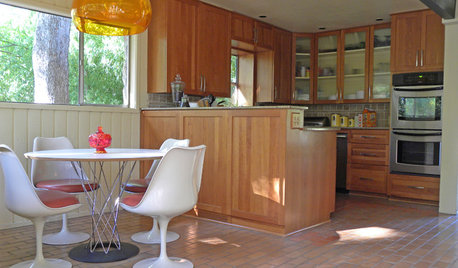
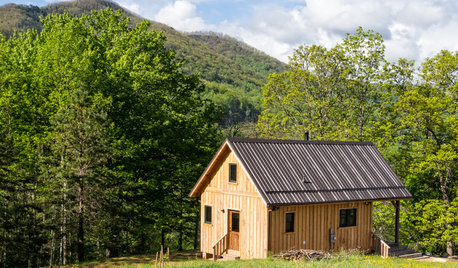
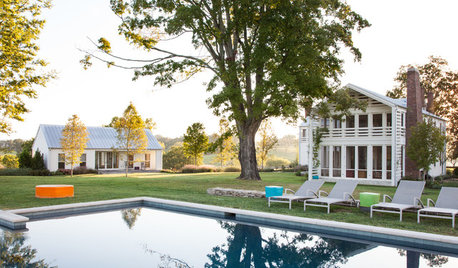
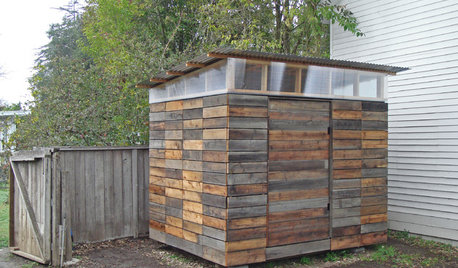

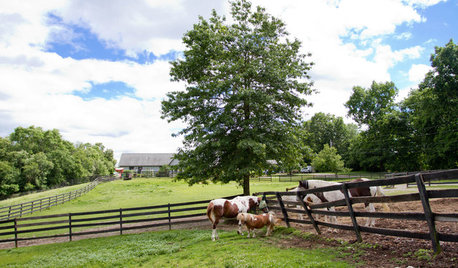
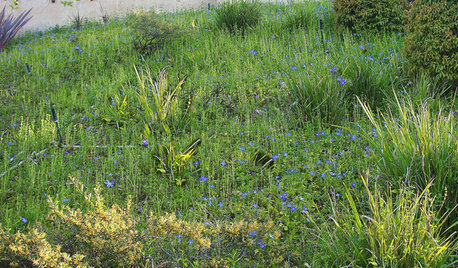

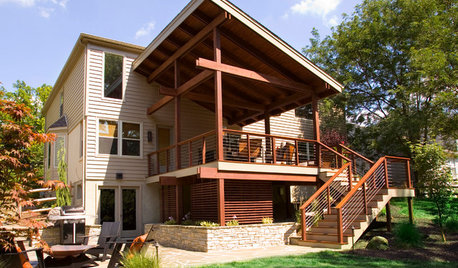







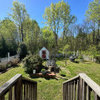
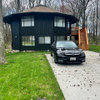
edlincoln